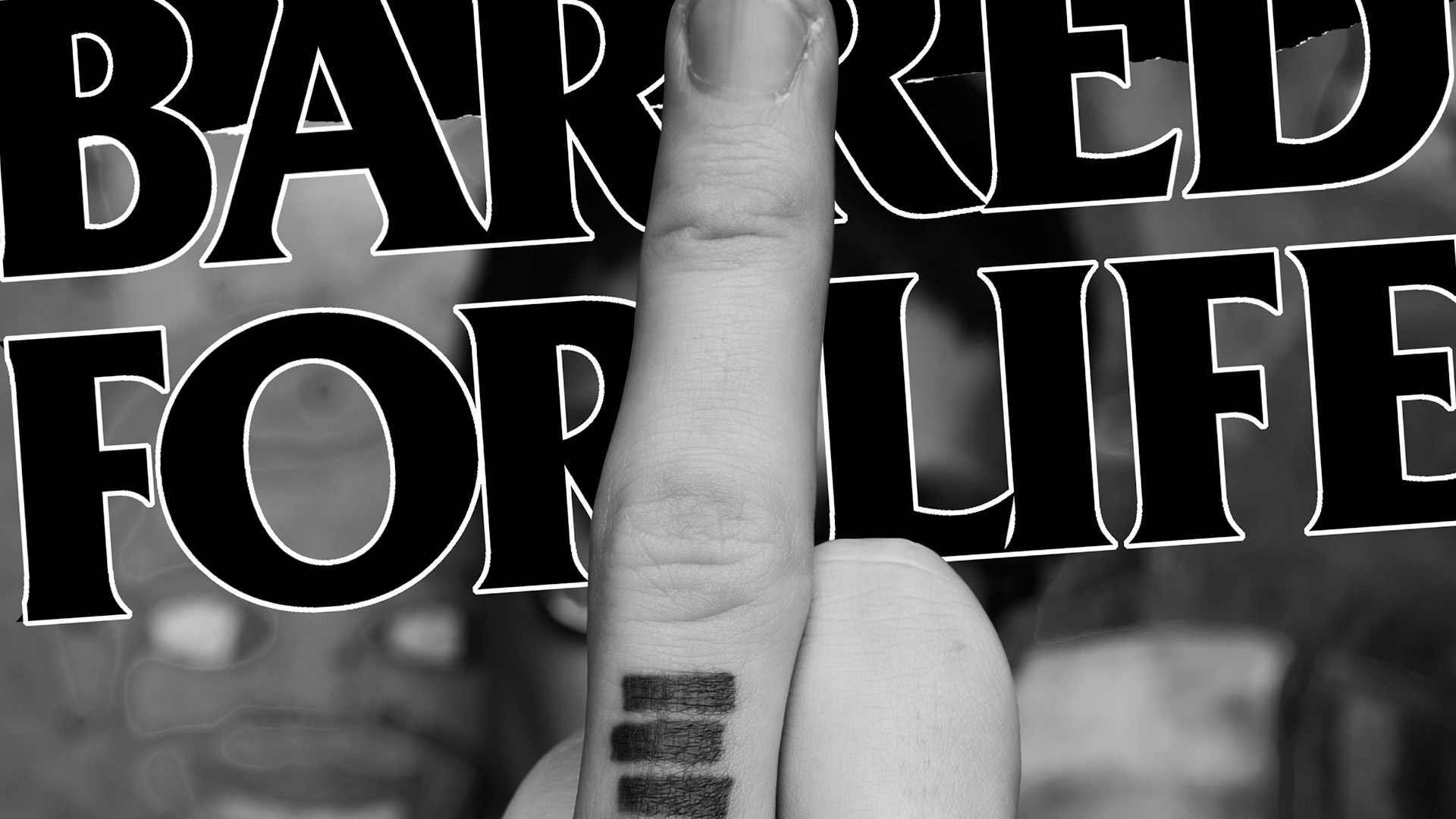by Kurt Morris
Razorcake
May 17th, 2013
I have been looking forward to Barred for Life for a number of years now. The subtitle says it all: “How Black Flag’s Iconic Logo Became Punk Rock’s Secret Handshake.” As someone who has “The Bars” (as they’re called), I was intrigued with what author Stewart Dean Ebersole would come up with. The book is hefty and depending on how punk rock your house is, it would make for a good coffee table book. The general thrust of the book is a plethora of photos of people with their tattoos of The Bars. The nice thing is that the photos aren’t just close-ups of the tattoos, rather the focus is on the individual. Sometimes The Bars are hard to find on the person, but they’re always there. It’s more about their experience with the logo. Each photo comes with some basic information (I’m not in the book, just using myself as an example):
Kurt Morris
Age: 34
Home: Boston, MA
Occupation: Researcher/Librarian
Favorite Singer: Rollins
Favorite Song: “In My Head”
Favorite Album: Who’s Got the 10 1/2 ?
In addition to their photo, they also have a snippet of text about The Bars or punk rock or what Black Flag has meant to them. Subjects are from the United States, Canada, and parts of Western Europe. While the photographs are the thrust of the book, there are also interviews with a number of members of Black Flag (Chuck Dukowski, Dez Cadena, Ron Reyes, Kira Roessler, and Keith Morris), as well as those associated with the band (tattooist Rick Spellman and photographers Edward Colver and Glen Friedman). Additionally, Ebersole has written essays about his experience with punk rock and Black Flag that are spread throughout the book and around the photos.
The photographs were well-done and intriguing. I wanted to learn more about each of these individuals, but, obviously, that is outside the scope of this text. The decision to focus on the individual over the tattoo was key in the success of Barred for Life. It shows that the book is about more than just the tattoo; it’s about how The Bars has affected so many people. The size of each photograph was generous, reminding the reader that this was the heart of the book. However, by the end of it, the amount of photographs felt overwhelming. There were so many, and unless the person had a funny pose or said something unique, they blurred together. One or two-dozen fewer photos would have still slacked my thirst for The Bars.
That being said, it seems a poor choice to intersperse Ebersole’s essays around the photographs. Separating the essays, photos, and interviews into discrete sections would have been a smarter choice. While it’s interesting to read how the forty-something Ebersole got into punk and his experiences with it, I found it to be superfluous. An introduction wherein he explained his history would have sufficed.
The interviews are great, though. But it’s misleading to call them interviews. They’re actually essays by the individuals with no questions interspersed. I learned things about the band and the lives of the individuals outside the band, as well as their thoughts on Black Flag all these years later. It’s a shame they couldn’t have been longer and included even more members. (Morris and Dukowski have talked about their time in Black Flag quite a bit, but what about Bill Stevenson or Anthony Martinez?) It’s unfortunate Greg Ginn and Henry Rollins weren’t included, but it’s not really a surprise, either, considering their past lack of interest in giving interviews about their time in Black Flag.
While the essays were largely unnecessary, Barred for Life is still a pretty cool book. It adds another level of depth to the history of one of punk rock’s most influential acts. This book is definitely recommended for fans of Black Flag as well as those interested in punk rock tattoos.
Back to Stewart Dean Ebersole’s Author Page | Back to Jared Castaldi’s Artist Page







